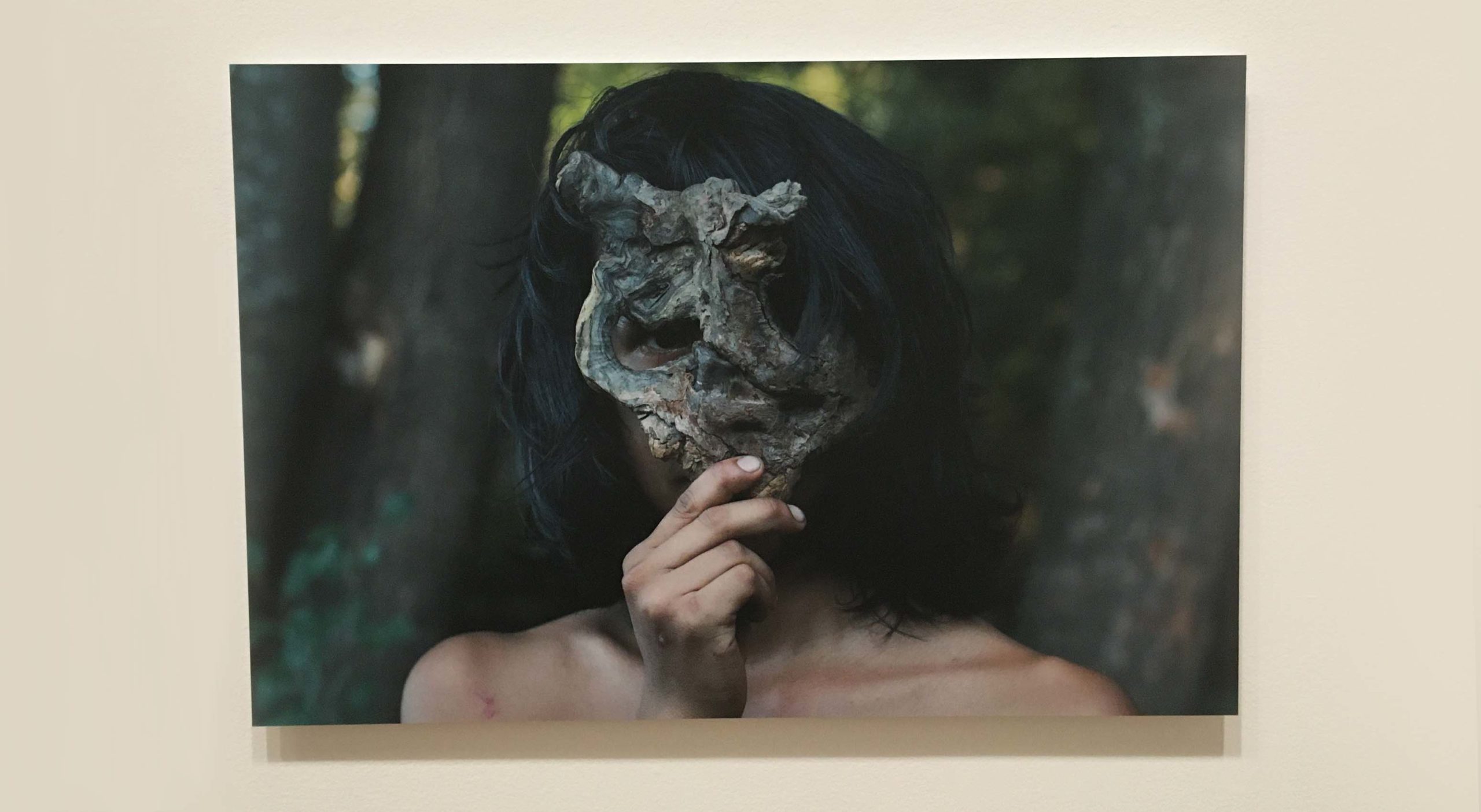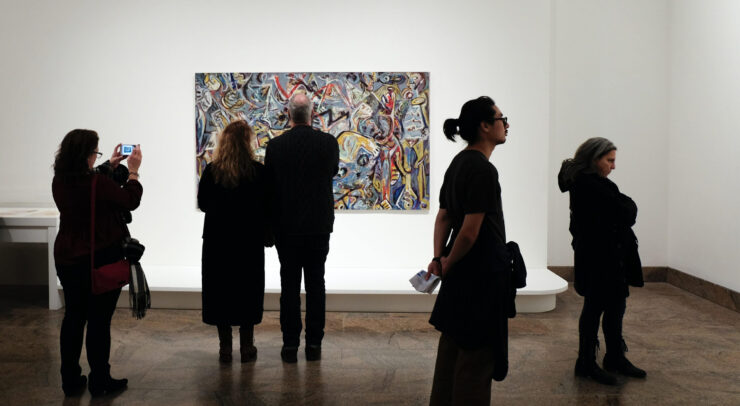Subversive beauty through modern photography
This weekend, I went to see the New Generation Photography Award exhibit at the National Gallery of Canada (that’s a mouthful). Each year, the award recognizes three outstanding Canadian photographers under the age of 35. The competition began in 2017 as a collaboration between the National Gallery and Scotiabank. All of the images in this collection were from six artists, two years’ worth of winners — three from 2020: Noah Friebel, Curtiss Randolph, and Katherine Takpannie, and three others from 2021: Dustin Brons, Chris Donovan, and Dainesha Nugent-Palache.
Curtiss Randolph – “My Father’s Son,” 2017-2019
Curtiss Randolph’s photos were stills from a docu-drama centred around his father’s work as a dancer and owner of a theatre in the 1950s. The rich, thick, gelatine silver prints allow the spring 1955 setting to take form and feel natural. The standout piece “Falling – No Catch” is an anxiety-inducing action shot of a performer about to fall from a ladder, tacitly demonstrating the very real dangers of make-believe.
Noah Friebel
Working with sculptural elements and installation concepts, Fribel attempts to transform the traditional canvas of photography from the mundane to the esoteric. Sometimes it sticks, sometimes it doesn’t. His 9m31s wall installation “Kiss or Cry” was just a compilation of close-up shots of figure skaters’ faces waiting for their scores, which felt particularly hackish. The wooden frames of his black and white prints of industrial fences and buildings had more artistic merit, as I think the frames did indeed add to the photos. On the other hand, the images should have spoken for themselves without the need for all the window dressing.
Katherine Takpannie
The Ottawa-raised Inuit artist carefully juxtaposes the wild, natural world and the tame consumer ones. Every photo in her collection featured a human in a natural environment, sometimes with props and sometimes caught in candid conversation. My favourite piece was a woman standing in the snow wearing a bright fur parka — a blotch of humanity in a landscape of frozen sleep. Another notable piece features a woman holding a piece of mask-shaped driftwood over her face as she stares down the camera.
Chris Donovan, “the Cloud Factory” 2014-ongoing
Donovan’s photoseries “The Cloud Factory” depicts desperation and environmental destruction in St. John’s, Newfoundland, a city with some made rich by oil extraction and others literally left in their dust. In “Objects in Mirror,” we see a man’s face reflected in his car’s rear view mirror and a smokestack through the windshield. The resigned anguish in his lined face is palpable. The collection is aptly named, as all the photographs feature clouds or their analogues: a vape cloud, a plume from a smokestack, steam from a factory. The black and white gel prints are a depressing portrait of a city in a post-industrial decline. But there is a sliver of hope: the optimistic “Lisa Holds Troy” features a mother and her son smiling.
Dustin Brons
Brons peels back the banality of the objects that we use in our quotidian lives and strives to uncover their representations, not just their physical forms. This series of photos was my personal favourite. The scenes of gentle domesticity, at first glance, are warm and inviting, primarily set in a mid-century modern kitchen. Looking closer, though, we see a dying houseplant, a precariously balanced wooden spoon, two nearly identical microwaves stacked on top of one another. Perhaps it’s worth enjoying the simple pleasures, but it’s also worth looking beyond them to find the simple pains.
Dainesha Nugent-PalacheI
Nugent-Palachel’s work explores the world of excess and Afro-Caribbean glamour with her photographs and performative video. I enjoyed her use of religion and mythology as motifs, especially in their relation to her representation of womanhood and its inherent mysticism. Her vivid inkjet prints had the intriguing feel of a traditional belief re-imagined in gaudy technicolour. Often, some parts of her still lifes would be just out of focus, adding a sense of fuzzy texture and perspective. “Black as Tar” is the exception to her other works displayed, as it featured a Black woman covered in black paint — an excellent and refreshing foil.
The exhibit is on display until December 5th. Act fast.





